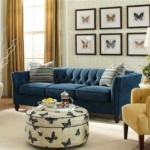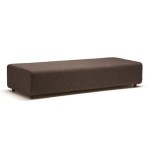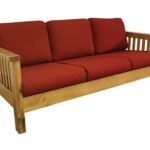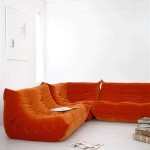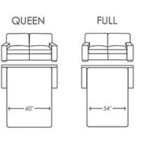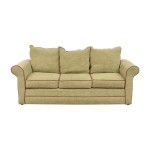How to Decorate a Sofa Console Table
A sofa console table, also often referred to as a sofa table, is a versatile piece of furniture positioned behind a sofa, typically in a living room or family room setting. It provides a functional surface for various items, adds visual interest to the space, and can enhance the overall aesthetic of the room. Mastering the art of decorating a sofa console table involves understanding key principles of balance, scale, and thematic coherence.
Understanding the Purpose of a Sofa Console Table
The initial step in decorating a sofa console table is to determine its intended purpose. Is it meant to be primarily decorative, or will it serve a practical function? Understanding this will guide the selection of items used in the arrangement. A purely decorative table might feature sculptures, artwork, and floral arrangements. A more functional table might incorporate lamps for reading, storage baskets for blankets or remotes, and trays for drinks and snacks. The purpose informs the selection and arrangement of accessories, ensuring the table complements the room's functionality and design.
Consider the lifestyle of the occupants. In a household with children or pets, prioritize durability and safety. Opt for items that are less fragile and securely anchored to prevent accidents. If entertaining is frequent, the table can be styled to accommodate drinks, appetizers, and conversation pieces. The table's function should seamlessly integrate into the daily life of the household, adding convenience and aesthetic value.
The sofa console table can also serve as a focal point, drawing the eye and establishing a design theme that is carried throughout the room. Its placement behind the sofa allows it to act as a visual bridge between the seating area and the rest of the space. Careful consideration of color schemes, textures, and styles ensures the table enhances the overall design of the room, creating a cohesive and inviting atmosphere. Determining the primary function enables one to establish a clear direction for the design process.
Achieving Balanced Aesthetics
Once the purpose is established, the next consideration is balance. Visual balance is critical to creating an appealing and harmonious arrangement. Balance refers to the distribution of visual weight within the space. There are several types of balance, including symmetrical, asymmetrical, and radial balance. However, for a sofa console table, symmetrical and asymmetrical balance are most commonly employed.
Symmetrical balance involves arranging identical or very similar objects on either side of a central point. This approach creates a formal and structured look. For example, matching lamps placed on either end of the table with a decorative bowl in the center exemplifies symmetrical balance. This approach is easy to implement and provides a sense of order and stability. The key to successful symmetrical balance is ensuring the items used are of similar size, shape, and color to maintain visual harmony. Variations within a symmetrical arrangement may include using objects that are slightly different in height or texture, while maintaining the overall mirrored effect.
Asymmetrical balance, on the other hand, involves arranging objects of different sizes and shapes to create equilibrium. This approach is more dynamic and visually interesting than symmetrical balance. It requires a more discerning eye to achieve a balanced arrangement. For example, a tall lamp on one side of the table can be balanced by a stack of books topped with a smaller decorative object on the other side. The key to successful asymmetrical balance is understanding visual weight. Larger objects have more visual weight than smaller objects, and darker colors appear heavier than lighter colors. Balancing these elements allows the table to appear visually stable, even when the arrangement is not perfectly symmetrical. One can create a sense of movement and visual interest by varying the heights and textures of the objects used.
Scale and proportion are also crucial elements of balance. Scale refers to the size relationship between objects. Proportion refers to the size relationship between the objects and the table itself. Objects that are too large can overwhelm the table, while objects that are too small can appear insignificant. The height of the objects should also be considered in relation to the height of the sofa. Taller objects can help to fill the vertical space and prevent the sofa from feeling disconnected from the rest of the room. Scale is addressed by selecting items that are proportionally appropriate for the console table size and height.
Color is an important aspect of balance. The color palette should complement the existing décor of the room. Using a cohesive color scheme helps to create a sense of harmony and unity. One may use contrasting colors to add visual interest, but it is important to do so in a balanced way. For instance, a pop of color can be introduced through a vase or a piece of artwork. Consider the color temperature of the room and the objects being used. Warm colors tend to advance visually, while cool colors recede. Incorporating a mix of warm and cool colors can add depth and dimension to the arrangement. The repetition of colors throughout the room can tie the space together.
Layering and Textural Variation
Layering is a technique that involves arranging objects in front of and behind each other to create depth and visual interest. The technique adds dimension to the sofa console table display, preventing it from appearing flat and static. Varying the heights and depths of the objects creates a more dynamic and engaging arrangement.
Start with a focal point, such as a large piece of artwork or a statement mirror. Place this item at the back of the table, leaning it against the wall or hanging it above the table. This will serve as the anchor for the arrangement. In front of the focal point, arrange a mix of smaller objects, such as lamps, vases, books, and decorative objects. Overlap the objects slightly to create a sense of depth and layering. Use trays or decorative boxes to group smaller items together and create visual order. Incorporate items of varying heights to add vertical interest. Tall objects can be placed at the back of the table, while smaller objects can be placed in front.
Texture is another key element in creating a visually appealing arrangement. Incorporating a variety of textures adds depth and dimension to the display. Consider incorporating items made from different materials, such as wood, metal, glass, and fabric. A woven basket can be paired with a smooth ceramic vase or a polished metal sculpture. The contrast in textures adds visual interest and prevents the arrangement from appearing monotonous. Texture can also be introduced through plants and greenery. The natural textures of leaves and stems add a touch of organic beauty to the display. The use of varied textures contributes to a more sophisticated and visually engaging composition.
Consider using books to add height and visual interest. Stack books horizontally and top them with a decorative object or a small plant. Books can also be used to create a base for other objects, such as lamps or vases. Arrange the books in a way that is visually appealing. Consider the colors and textures of the book covers when arranging them. Leather-bound books can add a touch of sophistication, while brightly colored books can add a pop of color. The strategic use of books can elevate the overall aesthetic of the table and create a more curated look. The subject matter of the books can also reflect the homeowner's interests and personality, adding a personal touch to the display.
Lighting also plays a critical role in emphasizing layering and textural variation. The incorporation of lamps adds both functionality and visual interest. Table lamps not only provide ambient light but also serve as decorative objects in their own right. Consider the style and finish of the lamps when selecting them. Lamps with metal bases can add a touch of glamour, while lamps with ceramic bases can add a touch of warmth. The lampshade can also play a role in shaping the light and adding texture. A linen lampshade will diffuse the light, creating a soft and inviting glow, while a silk lampshade may appear more formal. Position the lamps strategically to highlight different areas of the arrangement, and to create depth and dimension. The warm glow of the light will enhance the textures of the objects and create a cozy atmosphere.
Accessorizing and Personal Touches
Accessorizing involves selecting items that reflect one's personal style and interests. Personal touches transform the sofa console table from a mere furniture piece to a display of cherished memories and individual expression. Adding accessories that are meaningful and reflective of the homeowner’s personality is essential for creating a welcoming and personalized living space.
Incorporate personal photographs, artwork, and mementos that hold special significance. These items add character and create a connection to the space. Arrange the photographs in a visually appealing way. Consider using frames of varying sizes and styles to create a dynamic display. Group the photographs together based on a theme or color scheme to create a cohesive look. The photographs should be placed in a way that is both aesthetically pleasing and allows the homeowner to easily view and enjoy the memories they represent. Personal touches showcase individual experiences and values, making the space feel more authentic.
Consider incorporating items that reflect one's hobbies and interests. For example, a collection of vintage cameras, a display of seashells, or a stack of favorite books can add a personal touch to the arrangement. The items should be carefully selected and arranged to create a visually appealing display. Display items that are unique and reflect individual passions. Arranging an assortment of objects that showcase hobbies creates engaging content and conversation starters. By incorporating items that reflect individual interests, the table becomes a reflection of the homeowner’s personality and passions.
Plants and flowers add life and vibrancy to the display. A small potted plant or a vase of fresh flowers can brighten up the space and add a touch of nature. The plants should be selected based on the lighting conditions of the room and the overall style of the décor. Succulents are a low-maintenance option for those who don't have a green thumb, while orchids can add a touch of elegance. Position the plants strategically to create visual balance and add depth to the arrangement. Incorporating greenery and floral elements infuses the space with freshness and a natural ambiance. Plants and flowers enliven the composition, contributing to a cheerful and inviting living area.
The accessories chosen should complement the overall style and color scheme of the room. It is important to avoid cluttering the table with too many items. A few carefully selected items are more effective than a disorganized collection of objects. Edit the arrangement regularly to keep it fresh and visually appealing. Removing items that are no longer needed or that are not contributing to the overall aesthetic is a crucial step. A minimalist approach can be just as effective as a maximalist approach, depending on the homeowner’s personal style. The key is to create an arrangement that is both visually appealing and reflective of one's personality. The considered curation of accessories ensures the table remains both stylish and personal.

How To Style A Console Table Behind Couch 4 Ways

Behind The Couch Table Ideas For Your Living Room Stefana Silber

How To Style A Console Table Behind Couch 4 Ways

How To Style A Console Table Behind Couch 4 Ways

30 Diy Sofa Console Table Tutorial Jenna Sue Design

Sofa Table Ideas And Decor For Your Living Room Farmhousehub

How To Style A Console Table Behind Couch 4 Ways

How To Style A Console Table Behind Sofa With Shea Mcgee

Decorating A Sofa Table

Console Table Styling Behind A Couch Styled Two Ways Brandy Jackson

